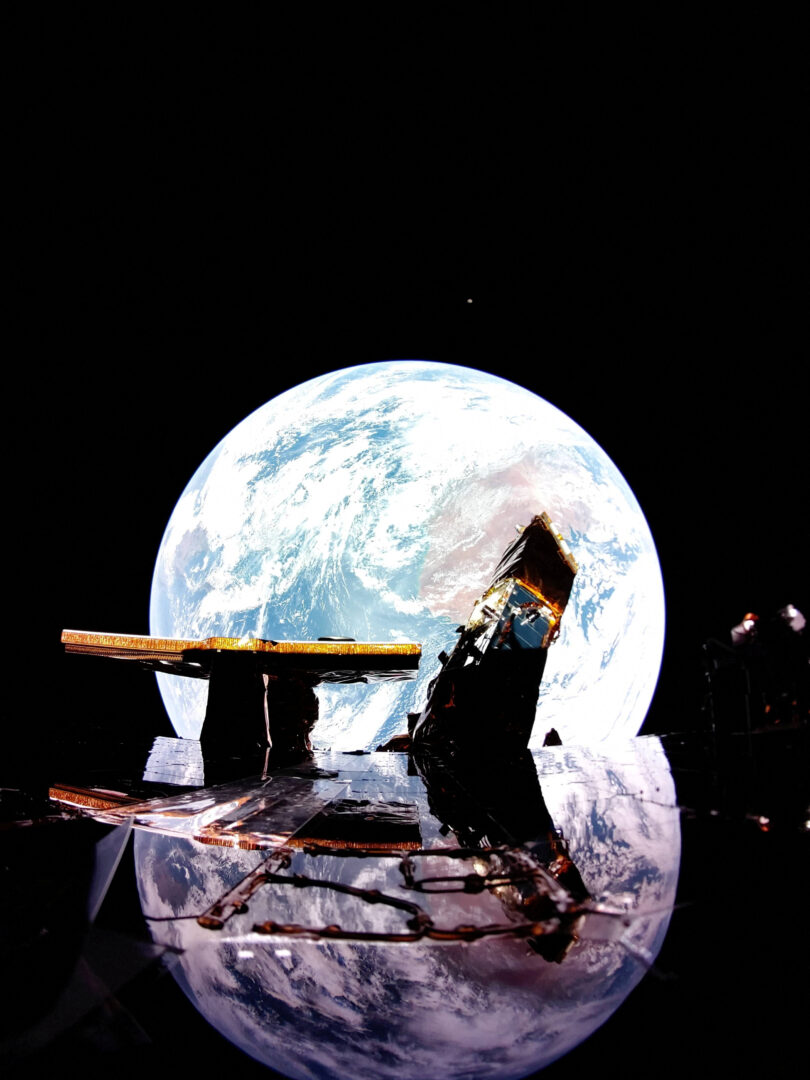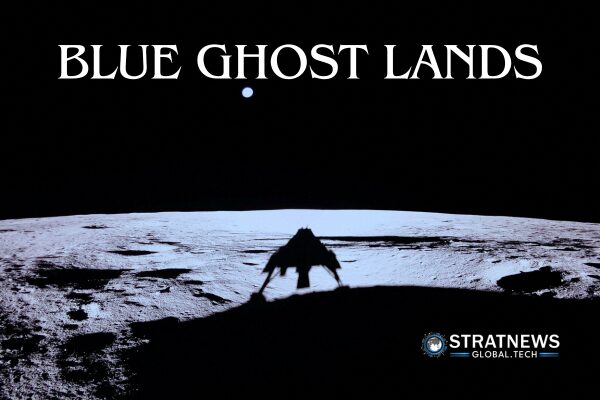Firefly Aerospace successfully landed its uncrewed Blue Ghost spacecraft on the Moon on Sunday, marking a significant achievement in private space exploration. The four-legged lander, roughly the size of a compact car, touched down at 3:35 a.m. ET (0835 GMT) near an ancient volcanic vent in Mare Crisium, a large basin on the Moon’s Earth-facing side.
As Blue Ghost made its final descent, suspense filled the mission control room at Firefly’s headquarters in Austin, Texas. Moments later, Will Coogan, the spacecraft’s chief engineer, confirmed that it had entered lunar gravity. Cheers erupted as he announced, “We’re on the Moon.”

A Milestone in the Private Space Race
Firefly Aerospace is now the second private company to achieve a Moon landing. However, it claims to be the first to make a “fully successful” soft landing. Last year, Intuitive Machines’ Odysseus lander touched down but sustained a lopsided landing that affected its onboard instruments.
Historically, only five nations—the US, the former Soviet Union, China, India, and Japan—have achieved soft lunar landings. The US and China are currently in a race to send astronauts back to the Moon, each working closely with their private sectors to develop space technology.
Firefly Aerospace Blue Ghost’s Journey and Research Mission
Blue Ghost took a winding route, orbiting Earth more than three times and covering 2.8 million miles before reaching the Moon, located 238,000 miles (383,000 km) away. The lander launched in January aboard a SpaceX rocket from NASA’s Kennedy Space Center in Florida.
The lander is equipped with three solar panels to power its research instruments for a 14-day mission. Once the frigid lunar night sets in, with temperatures dropping to -280°F (-173°C), operations will cease.
Among Blue Ghost’s scientific objectives:
- Studying lunar soil and subsurface temperatures with instruments from Honeybee Robotics, a subsidiary of Blue Origin.
- Collecting data on dust plumes kicked up during landing, using a stereo camera from NASA’s Langley Research Center.
The Intensifying Global Moon Race
Firefly’s mission is part of NASA’s Commercial Lunar Payload Services (CLPS) program, which awarded the company a $101 million contract. The initiative aims to create a private lunar market, making Moon missions more affordable and frequent.
Other nations are also accelerating their lunar ambitions:
- China plans to send astronauts to the Moon by 2030.
- Japan and India, both aligned with the US in space collaboration, continue advancing their lunar programs.
- Europe is investing in private rocket startups, following NASA’s commercial spaceflight model.
NASA’s CLPS chief, Chris Culbert, highlighted the mission’s success, stating, “We landed on the Moon, almost perfectly.”
Despite growing competition, NASA remains focused on lunar dominance, with Artemis missions planning to send humans back to the Moon later this decade. The data gathered by Blue Ghost and similar missions will help pave the way for future crewed explorations.
With inputs from Reuters
Author

A multi-faceted professional with a diverse range of skills and experiences. He currently works as a Producer, Digital Marketer, and Journalist for several well-known media outlets, namely StratNewsGlobal, BharatShakti, and Interstellar. With a passion for storytelling and a keen eye for detail, Aditya has covered a wide range of topics and events across India, bringing a unique perspective to his work.When he's not busy producing content, Aditya enjoys exploring new places and cuisines, having traveled extensively throughout India. He's also an avid writer and poet, often penning his thoughts and musings in his free time. And when he wants to unwind and relax, Aditya spends time with his two loyal companions, Zorro and Pablo, his beloved dogs.Aditya's dynamic personality and varied interests make him a unique individual, always eager to learn and experience new things.
View all posts


